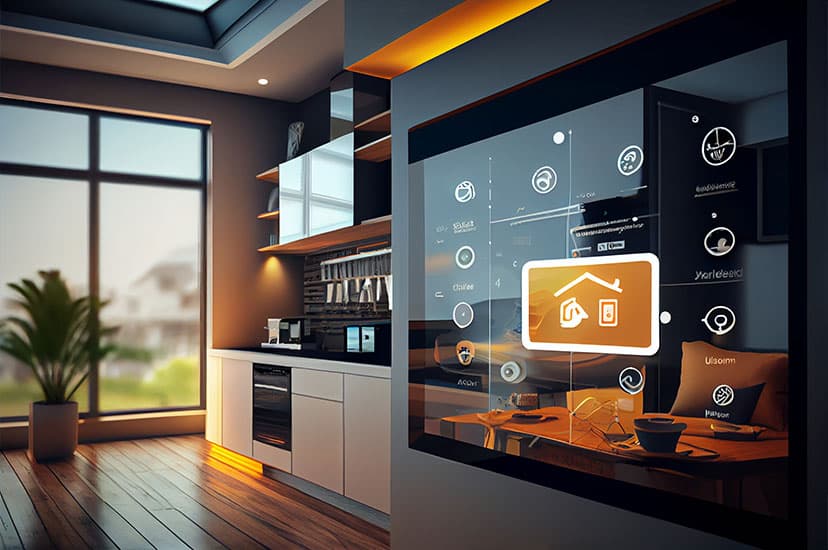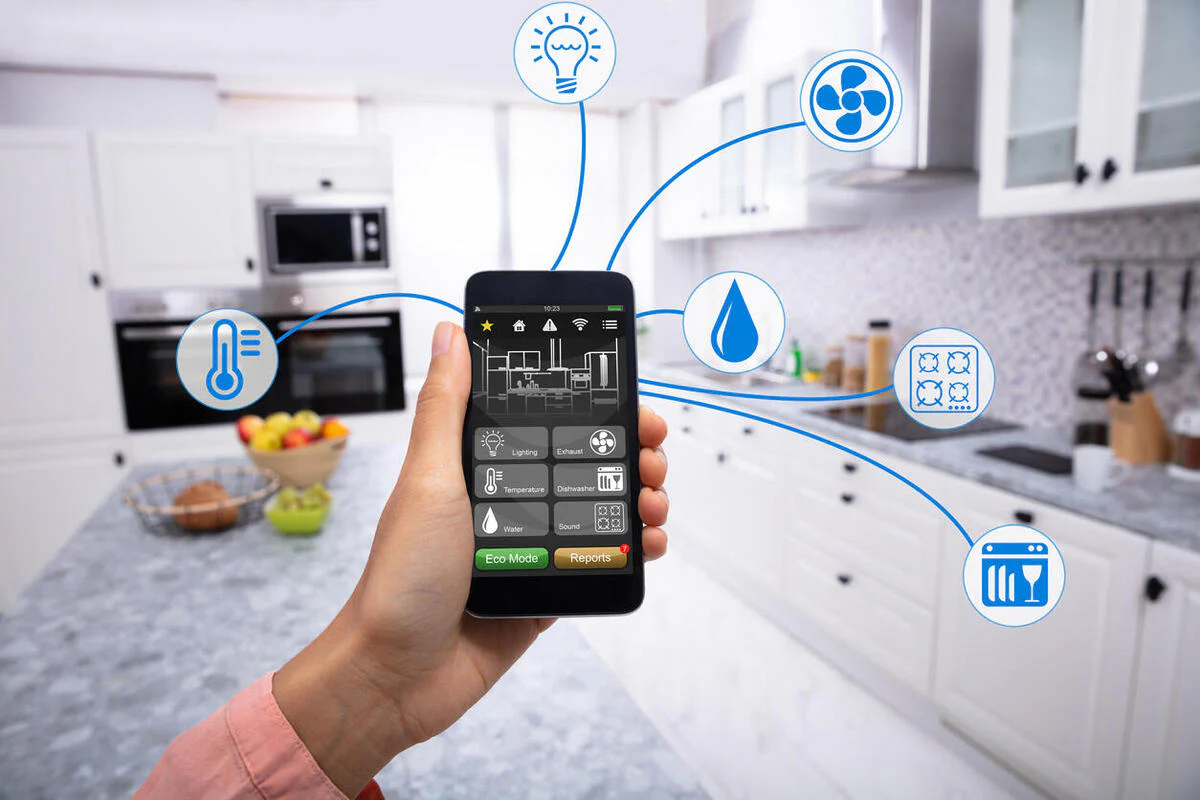In today’s fast-paced world, technology has become an integral part of our lives, and nowhere is this more evident than in our homes. Home automation systems, once considered a luxury, are now becoming mainstream, making our lives more convenient, secure, and efficient. This guide will delve into what home automation systems are, their benefits, key features, and how to set one up, providing you with a comprehensive understanding of this rapidly evolving technology.
Home Automation
What is Home Automation?

Home automation refers to the use of technology to control various household functions and devices automatically. It allows you to manage your home’s lighting, heating, cooling, security, and other systems from a central hub or remotely using a smartphone or tablet. The primary goal of home automation is to enhance the convenience, comfort, security, and energy efficiency of your home.
History and Evolution of Home Automation
The concept of home automation has been around for decades, evolving from simple remote-controlled devices to complex, interconnected systems. The advent of the internet and advancements in wireless technology have significantly accelerated the development and adoption of home automation. Today, these systems can integrate seamlessly with various smart devices, providing homeowners with unprecedented control over their living environments.
Key Components of a Home Automation System
A typical home automation system consists of several key components, including:
- Sensors: Devices that detect changes in the environment, such as motion, temperature, or light levels.
- Controllers: Central hubs or apps that manage and control the automation system.
- Actuators: Devices that perform actions based on signals from the controllers, such as turning on lights or adjusting the thermostat.
- User Interface: The means by which users interact with the system, which can be a smartphone app, voice commands, or physical control panels.
Types of Home Automation Systems
Wireless Home Automation
Wireless home automation systems use radio frequency (RF) signals, Wi-Fi, or Bluetooth to communicate between devices. These systems are popular because they are relatively easy to install and do not require extensive wiring. However, they can be susceptible to interference and may have limited range.
Wired Home Automation
Wired home automation systems use physical cables to connect devices. While these systems can be more reliable and secure, they are often more challenging to install and may require professional assistance. Wired systems are typically preferred for new constructions or major renovations where running cables is more feasible.
Hybrid Systems
Hybrid home automation systems combine both wired and wireless technologies, offering the advantages of both. These systems provide greater flexibility and can be customized to suit the specific needs of the homeowner.
Key Features of Home Automation Systems
Lighting Control
Smart lighting allows you to control your home’s lighting remotely, set schedules, and create lighting scenes for different activities. You can also use sensors to automatically turn lights on or off based on occupancy or natural light levels.
Climate Control (Heating and Cooling)
Smart thermostats enable you to manage your home’s heating and cooling systems more efficiently. You can set schedules, adjust temperatures remotely, and even use learning algorithms to optimize energy usage based on your habits.
Security and Surveillance
Home automation systems can integrate with smart security devices such as cameras, door locks, and motion sensors. This integration allows you to monitor your home in real-time, receive alerts, and control access from anywhere.
Smart Appliances
Modern home automation systems can connect to smart appliances, such as refrigerators, ovens, and washing machines. This connectivity allows you to monitor and control these devices remotely, receive maintenance alerts, and even automate certain tasks.
Entertainment Systems
Home automation can enhance your entertainment experience by integrating with smart TVs, speakers, and streaming devices. You can create custom scenes, control your media setup with voice commands, and sync audio throughout your home.
Energy Management
Smart home systems can help you reduce energy consumption by monitoring usage and optimizing the performance of various devices. For example, you can automatically turn off devices when they are not in use or adjust settings to reduce power consumption during peak hours.
Popular Home Automation Protocols
Wi-Fi
Wi-Fi is one of the most common protocols used in home automation due to its widespread availability and ease of use. However, it can consume significant bandwidth and may be less reliable in larger homes with many connected devices.
Zigbee
Zigbee is a low-power, wireless communication protocol designed for home automation. It allows devices to form a mesh network, improving range and reliability. Zigbee is known for its efficiency and ability to support a large number of devices.
Z-Wave
Z-Wave is another popular wireless protocol that creates a mesh network for home automation devices. It is designed to be reliable and energy-efficient, with a focus on security. Z-Wave devices are compatible with a wide range of smart home products.
Bluetooth
Bluetooth is commonly used for short-range communication between devices. While it is not as widely used in home automation as Wi-Fi or Zigbee, it can be effective for specific applications, such as controlling individual devices within a room.
Thread
Thread is a newer protocol designed specifically for home automation. It provides secure, reliable, and low-power communication between devices. Thread is compatible with many existing smart home products and is expected to become more prevalent as adoption grows.
Integrating Voice Assistants
Amazon Alexa
Amazon Alexa is one of the most popular voice assistants, compatible with a wide range of smart home devices. You can use Alexa to control lights, thermostats, security systems, and more with simple voice commands.
Google Assistant
Google Assistant offers robust integration with smart home devices and provides advanced features such as contextual understanding and multi-user support. It can control various devices, create routines, and answer queries.
Apple Siri
Apple Siri is integrated with Apple’s HomeKit platform, allowing you to control compatible smart home devices using voice commands. Siri is known for its strong privacy features and seamless integration with other Apple products.
Benefits of Voice Control
Voice assistants make home automation more accessible and convenient, allowing you to control devices hands-free. They can also integrate with other services, such as calendars and reminders, to provide a more comprehensive smart home experience.
Setting Up a Home Automation System
Assessing Your Needs
Before setting up a home automation system, it’s essential to determine your specific needs and goals. Consider which devices and functions you want to automate and how you plan to control them.
Choosing the Right Devices
Select devices that are compatible with your chosen home automation platform and protocols. Look for products with good reviews and reliable performance. Consider starting with a few key devices and gradually expanding your system.
Installation Tips
- Follow Instructions: Carefully follow the manufacturer’s installation instructions to ensure proper setup.
- Use Professional Help if Needed: For complex installations, such as wiring or integrating security systems, consider hiring a professional.
- Test Your System: After installation, test each device to ensure it works correctly and integrates with your central hub or app.
Creating Automations and Routines
Once your devices are set up, you can create automations and routines to streamline daily tasks. For example, you can set your lights to turn on at sunset or your thermostat to adjust when you leave for work. Experiment with different settings to find what works best for your lifestyle.
Top Home Automation Systems on the Market
Comparison of Leading Brands
- SmartThings: Known for its versatility and compatibility with a wide range of devices. It offers robust automation features and a user-friendly app.
- Wink: Offers a simple and intuitive interface, making it a good choice for beginners. It supports various protocols and devices.
- HomeKit: Apple’s platform provides seamless integration with iOS devices and strong privacy features. It supports a growing number of compatible products.
Pros and Cons of Each System
- SmartThings: Highly flexible but can be complex for beginners.
- Wink: Easy to use but has limited advanced features.
- HomeKit: Excellent integration with Apple devices but limited to iOS users.
Future Trends in Home Automation
Advances in AI and Machine Learning
Artificial intelligence and machine learning are driving the next wave of home automation innovation. These technologies enable devices to learn from user behavior, making automation more intuitive and personalized.
Increased Interconnectivity
As more devices become connected, the potential for seamless integration and communication between systems increases. This interconnectivity will lead to more sophisticated and cohesive home automation experiences.
Sustainability and Energy Efficiency
Future home automation systems will focus more on sustainability, with features designed to reduce energy consumption and environmental impact. Smart grids, energy-efficient appliances, and renewable energy sources will play a significant role.
Conclusion
Home automation systems have transformed the way we interact with our living spaces, offering unprecedented levels of convenience, security, and efficiency. By understanding the key components, types, features, and protocols, you can make informed decisions about setting up and expanding your own home automation system. As technology continues to evolve, the possibilities for enhancing your home will only grow, making now the perfect time to explore the world of home automation.




